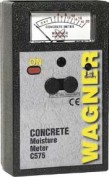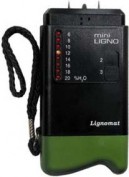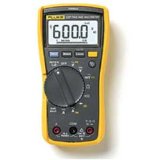Search This Site
Search With Google
Buckling is caused when a floor is flooded, the expansion gap around the perimeter of a room is not large enough, nailing that has not been done properly and even the use of the wrong glue on glued floors.
If you repair a floor at the first signs of buckling then you could save yourself a more major job later on. If you have access to the floor from underneath then you may be able to repair the floor without having to remove any boards. However, in most cases, replacing the buckled floorboards is usually required.
Before beginning any repair, one should always try to locate the source of any excess moisture to prevent problems further on down the road. One needs to check for cracked pipes, any drainage issues, a leaky roof or even high humidity levels in the building. All these checks can be carried out using the appropriate type of moisture meter.
Make The Repair Invisible
If you do not have any extra bits of flooring then you should take a sample to a flooring supplier and see if they can supply you with a match. If you cannot find a match then you will have to use unfinished wood of the same variety and use wood stain to get the correct match.
Repairing If You Have Access From Below The Floor
Before going underneath the floor, place a large heavy weight, such as a cement block on the buckled boards or boards. Then go under the floor and drive a screw through the subfloor and in to the buckled board. Ensure that the screw is not too long and go through the floorboard. When the screw hits the floorboard it will pull the flooring down and get rid of the buckle.
Repairing If You Do Not Have Access Under The Floor
This requires more work and effort. You have to remove the centre piece of the buckled board as well as the grooved edge piece. Once this has been done, any remaining nails or screws must also be removed.
Measure up the gap that is left and cut a piece of board to fit in it. Ensure that the area is clean and that the new piece of board has the same moisture content levels as the existing boards.
You check this with a suitable wood moisture meter such as the Stihl moisture meter.
Fit the new piece of board and glue, nail or screw as necessary.
Matching The Floor Finish
Sand lightly ensuring you go in to the existing flooring to blend it.
Use a floor scraper to smooth out the repair. Always scrape with the wood grain and not against it.
Finish the scraping with sandpaper to get the perfect finish.
Apply the wood stain from the centre of the repair and wipe from edge to the centre.
When the woodstain is dry you can degloss the finish around the perimeter and then apply the finish over all the repaired area.
After drying you can apply a second coat if necessary.
How To Repair A Hardwood Floor That Has Buckled
On This Site



Sponsored Links
A well installed floor that is cared for properly and maintained well, will give many years of service and beautiful appearance. However any changes in temperature and humidity will affect this floor and cause it to expand and shrink.
This is when problems occur and actions are required. Any excess moisture will cause a floor to buckle.
The wood will absorb the moisture and because the floor is restrained by walls, the expanded wood can only move upwards, causing the buckling.
The effects of buckling can be limited by maintaining the moisture levels in the air and monitoring your floor moisture levels with a moisture meter from time to time.
Moisture Meter Guide 2010 Contact details:garnett65@hotmail.com


The complete moisture meter website
Moisture Meter Guide

| Tramex Moisture Encounter Plus |
| Tramex Compact Wood Moisture Meter |
| Tramex Concrete Encounter Moisture Meter |
| Tramex Skipper Plus Moisture Meter |
| Tramex Roof And Wall Moisture Scanner |
| Sonin Digital Moisture Meter model 50218 |
| Sonin Digital Moisture Meter 270 model 50270 |
| Sonin Moisture Test Tool model 50210 |
| Sonin Moisture Test Meter Model 50211 |
| Oak |
| Douglas Fir |
| Beech Tree |
| Elm Tree |
| Hickory Tree |
| Maple Tree |
| Pine Tree |
| Prevent And Repair Gaps In Wooden Floorboards |
| How To Fix A Squeaky Hardwood Floor |
| How To Repair A Hardwood Floor That Has Buckled |
| Which Is The Best Firewood? |
| Concrete |
| Concrete Moisture |
| Screed Moisture Meter |
| SDS Drill |
| Belle Cement Mixer |
| SDS Drill Advice |
| Which SDS Drill |
| SDS Drill Accessories |
| Drilling Into Concrete |
| Kennedy Tool Box |
| Moisture - Basic Facts |
| Types Of Damp |
| Wet Rot |
| Dry Rot |
| Mold |
| Water Leak Detection |
| Stucco Moisture |
| Water Damage |
| Moisture And Rust |
| Moisture Damage To A Chimney |
| Wallpaper Stripper |
| Plaster Mixer |
| Why Worry About Moisture Problems |
| Does Your Home Have A Moisture Problem? |
| How To Solve Moisture Problems |
| How To Use Anti Mold Paint |
| Rising Damp |
| Condensation |
| Salt Damp |
| How To Avoid Bathroom Condensation |
| How To Remove Black Mold |
| How To Prevent Bathroom Mold |
| Soldering Kit |
| Soldering Kit Contents |
| Soldering Kit Advice |
| Bonsai Tree Classification |
| Growing Bonsai From Seed |
| Bonsai Tree Care |
| Bonsai Tree Training |
| Bonsai Tools |
| Displaying Bonsai |
| Bonsai Calendar |
| Bonsai Plants |
| The Thirsty Light Curve Moisture Meter |
| The Thirsty Light Ladybird Moisture Meter |
| The Thirsty Light Bumble Bee Moisture Meter |
| The Thirsty Light Butterfly Moisture Meter |
| Hanna Instruments |
| Agratronix Portable Coffee Moisture Tester |
| Lawn Aerator |
| Lawn Roller |
| Lawn Rake |
| Lawn Sand |
| Chainshot |
| Chainsaw Gloves |
| Chainsaw Trousers |
| Chainsaw Boots |
| Mac 4 - 20 XT Chainsaw |
| Mac 738 Chainsaw |
| Mac 842 Chainsaw |
| Mac 20X Power Chainsaw |
| Einhell BG-PC 3735 Chainsaw |
| Einhell BG-PC 4040 Chainsaw |
| Einhell BG-PC 5045 Chainsaw |
| Poulan P3314 Chainsaw |
| Poulan P4018 Chainsaw |
| Poulan Pro PP3816AV Chainsaw |
| Poulan Pro PP4218AVX Chainsaw |
| Poulan Pro PP4620AVX Chainsaw |
| Efco MT 4100 SP Chainsaw |
| Efco MT 3500 Chainsaw |
| Efco 132 S Chainsaw |
| Efco 147 Chainsaw |
| Efco 152 Chainsaw |
| Efco MT 7200 Chainsaw |
| Efco MT 8200 Chainsaw |
| Efco MT 3750 Chainsaw |
| Methods Of Obtaining Soil Moisture Levels |
| Hygrometer |
| Psychrometer |
| Rain Gauge |
| Wave Ventilation System |
| Humidity |
| Hygrometer For Keeping Reptiles |
| Humidor |
| Weather Stations |
| Musical Instrument Storage |